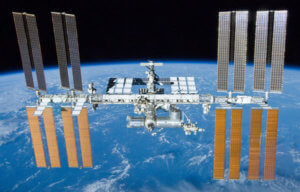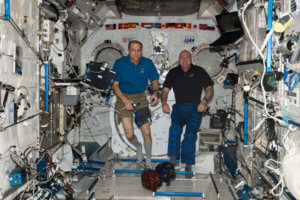Houston, We Have a Silver Anvil
Published on Sept. 13, 2017 at 2:56 p.m.
by Elizabeth Selmarten.
NASA recently earned recognition for its “Year in Space: Communicating NASA’s Historic One-Year Mission from Space to Ground” program at the PRSA 2017 Silver Anvil Awards Ceremony. The governmental space agency took home the highest honor of the night, the Best of Silver Anvil Award. The award is given to organizations that have delivered “the very highest levels of professional achievement,” according to PRSA.
NASA’s PR responsibilities are primarily helmed by its Public Affairs Office (PAO). The PAO is no stranger to executing great communications campaigns. Back in its early days, NASA’s Apollo marketing and public relations changed the course of the space race by educating Americans, resulting in a very positive American public perception of the program.
Almost a half-century later, NASA embarked on a different historical mission. Starting March 2015, NASA astronaut Scott Kelly and ROSCOSMOS cosmonaut Mikhail Korniyenko were to spend an uninterrupted year in space up on the International Space Station (ISS) to learn about the health effects of long-term spaceflight. It would be longest single spaceflight for an American astronaut.
Like the preceding lunar missions, this mission would need to be well-communicated. However unlike the missions of the 20th century, this one occurred in a very different world: a social media-fueled, multimedia-driven world where old-fashioned PR doesn’t always cut it.
Astronaut Don Pettit is one of NASA’s oldest active astronauts and has done two long-duration stays aboard ISS.

“We have a bunch of really sharp people at NASA PAO,” Pettit said. “I think [this mission] made a really good story, and the NASA people have a good understanding of telling stories like that.”
NASA public affairs officer Dan Huot is responsible for the International Space Station at the Johnson Space Center, where the ISS program is headquartered. But his group wasn’t the sole party working on communicating the mission.
“We have a fantastic core team here in Houston made up of communicators, video producers, social media experts and others in both our PAO and ISS Program office that worked together over several months to formulate all of the different products we would be producing during Scott’s mission,” said Huot. “Other PAO offices, particularly my colleagues at NASA HQ, were instrumental in formulating the key messages. It was a really cohesive effort that took the form of a lot of meetings, telecons and emails to pull everything together.”
The astronauts themselves also play a crucial role in communicating NASA’s messages. NASA astronauts are expected to spend at least one and a half days per month on communications outreach.

Pettit said while not much has changed since he started in the astronaut core in 1996, the introduction of technology such as Skype and social media has made it easier to communicate with people from a distance. It’s up to each astronaut how active they are on social media.
“While you’re in space, you can do the official PAO downlinks. Then you can also do social media. You can do Facebook. You can tweet but we don’t have really good internet connection on station,” Pettit said. “So what folks do for tweeting and Facebook is they’ll have a picture or write a couple sentences, and they’ll put it in an email and shoot it down to a NASA PAO person and then that person will do the tweeting and the Facebook stuff on our behalf.”
Kelly was very active on social media before, during and after the ‘Year in Space,’ which helped contribute to the campaign’s success.
“Our own efforts through social media, including Scott’s personal accounts, gave huge numbers direct access to the mission and general updates on what was happening and why they should take interest,” Huot said.
In addition to social media, NASA partnered with established media like TIME, put on educational events and was featured in legislative events, such as the State of the Union address prior to Kelly’s launch.
Through all these different means, NASA was able to deliver on communicating this specific mission.
“I took an immense amount of pride in the work we did as a team to make the ‘Year in Space’ as big of a hit as it was,” Huot said. “To get recognition from another organization like PRSA was the cherry on top.”




